Entry Database : PDB / ID : 1oy3Title CRYSTAL STRUCTURE OF AN IKBBETA/NF-KB P65 HOMODIMER COMPLEX Transcription factor p65 transcription factor inhibitor I-kappa-B-beta Keywords / / / Function / homology Function Domain/homology Component
/ / / / / / / / / / / / / / / / / / / / / / / / / / / / / / / / / / / / / / / / / / / / / / / / / / / / / / / / / / / / / / / / / / / / / / / / / / / / / / / / / / / / / / / / / / / / / / / / / / / / / / / / / / / / / / / / / / / / / / / / / / / / / / / / / / / / / / / / / / / / / / / / / / / Biological species Mus musculus (house mouse)Method / / / Resolution : 2.05 Å Authors Malek, S. / Huang, D.B. / Huxford, T. / Ghosh, S. / Ghosh, G. Journal : J.Biol.Chem. / Year : 2003Title : X-ray crystal structure of an IkappaBbeta x NF-kappaB p65 homodimer complex.Authors : Malek, S. / Huang, D.B. / Huxford, T. / Ghosh, S. / Ghosh, G. History Deposition Apr 3, 2003 Deposition site / Processing site Revision 1.0 May 20, 2003 Provider / Type Revision 1.1 Apr 29, 2008 Group Revision 1.2 Jul 13, 2011 Group Revision 1.3 Aug 16, 2023 Group / Database references / Refinement descriptionCategory chem_comp_atom / chem_comp_bond ... chem_comp_atom / chem_comp_bond / database_2 / pdbx_initial_refinement_model Item / _database_2.pdbx_database_accession
Show all Show less
 Open data
Open data Basic information
Basic information Components
Components Keywords
Keywords Function and homology information
Function and homology information
 X-RAY DIFFRACTION /
X-RAY DIFFRACTION /  SYNCHROTRON /
SYNCHROTRON /  MOLECULAR REPLACEMENT / Resolution: 2.05 Å
MOLECULAR REPLACEMENT / Resolution: 2.05 Å  Authors
Authors Citation
Citation Journal: J.Biol.Chem. / Year: 2003
Journal: J.Biol.Chem. / Year: 2003 Structure visualization
Structure visualization Molmil
Molmil Jmol/JSmol
Jmol/JSmol Downloads & links
Downloads & links Download
Download 1oy3.cif.gz
1oy3.cif.gz PDBx/mmCIF format
PDBx/mmCIF format pdb1oy3.ent.gz
pdb1oy3.ent.gz PDB format
PDB format 1oy3.json.gz
1oy3.json.gz PDBx/mmJSON format
PDBx/mmJSON format Other downloads
Other downloads 1oy3_validation.pdf.gz
1oy3_validation.pdf.gz wwPDB validaton report
wwPDB validaton report 1oy3_full_validation.pdf.gz
1oy3_full_validation.pdf.gz 1oy3_validation.xml.gz
1oy3_validation.xml.gz 1oy3_validation.cif.gz
1oy3_validation.cif.gz https://data.pdbj.org/pub/pdb/validation_reports/oy/1oy3
https://data.pdbj.org/pub/pdb/validation_reports/oy/1oy3 ftp://data.pdbj.org/pub/pdb/validation_reports/oy/1oy3
ftp://data.pdbj.org/pub/pdb/validation_reports/oy/1oy3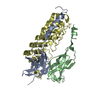
 Links
Links Assembly
Assembly
 Components
Components



 X-RAY DIFFRACTION / Number of used crystals: 1
X-RAY DIFFRACTION / Number of used crystals: 1  Sample preparation
Sample preparation SYNCHROTRON / Site:
SYNCHROTRON / Site:  ALS
ALS  / Beamline: 5.0.2 / Wavelength: 1.1 Å
/ Beamline: 5.0.2 / Wavelength: 1.1 Å Processing
Processing MOLECULAR REPLACEMENT
MOLECULAR REPLACEMENT Movie
Movie Controller
Controller




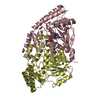

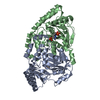
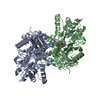
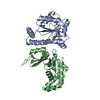

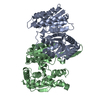

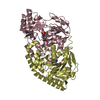
 PDBj
PDBj














